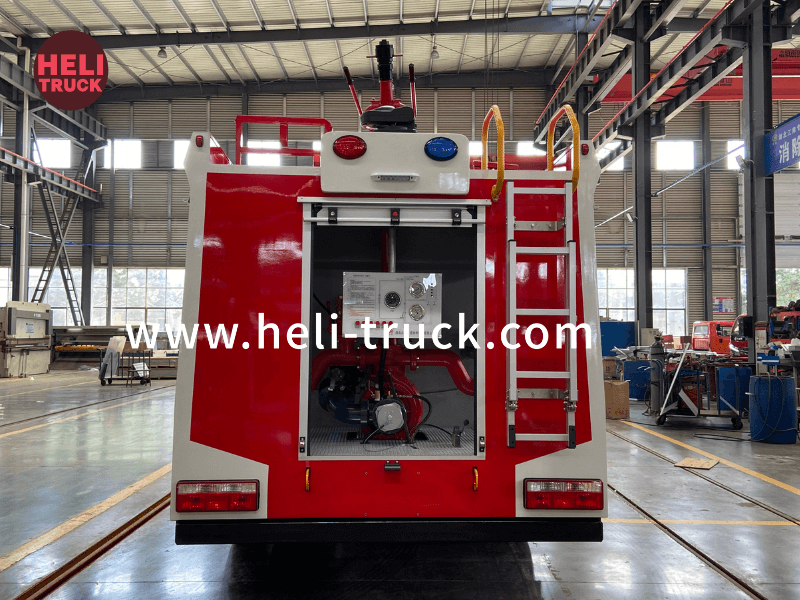refuse truck dimensions play a crucial role in waste management systems worldwide by collecting and compacting solid waste efficiently. With the increasing focus on sustainability and environmental protection, the demand for advanced garbage compactor trucks with enhanced features has been on the rise. This article aims to provide a comprehensive comparative analysis of various garbage compactor truck features to help stakeholders make informed decisions when selecting the most suitable equipment for their waste management needs.
1. Types of Garbage Compactor Trucks
There are several types of garbage compactor trucks available in the market, each designed for specific waste collection and compaction requirements. The most common types include:
- Rear Loader Compactor Trucks: Rear loader compactor trucks are equipped with a compactor mechanism at the rear of the vehicle, allowing waste collection from curbside bins or containers.
- Front Loader Compactor Trucks: Front loader compactor trucks feature a compactor system at the front of the vehicle, enabling efficient collection of waste from commercial dumpsters or containers.
- Side Loader Compactor Trucks: Side loader compactor trucks have a compactor mechanism on the side of the vehicle, making them ideal for collecting waste from narrow alleyways or residential areas.
2. Capacity and Loading Mechanism
One of the key considerations when comparing garbage compactor trucks is their capacity and loading mechanism. The capacity of a compactor truck refers to the volume of waste it can hold before requiring emptying. Larger capacity trucks are suitable for high-density urban areas or commercial establishments with large waste generation.
The loading mechanism of a compactor truck determines how waste is loaded into the vehicle for compaction. Common loading mechanisms include manual loading, hydraulic lifts, or automated arms. Automated loading mechanisms are preferred for their efficiency and reduced manual labor requirements.
3. Compaction System
The compaction system is a critical feature of garbage compactor trucks that determines the level of waste compression and storage efficiency. Hydraulic compaction systems are commonly used in compactor trucks for their ability to apply high pressure to compress waste effectively. The compaction ratio, which refers to the reduction in waste volume after compaction, is an important factor to consider when comparing compactor trucks.
4. Waste Handling and Discharge
Efficient waste handling and discharge mechanisms are essential for seamless operation and optimal performance of garbage compactor trucks. Some key features to consider include:
- Sealed Containers: Garbage compactor trucks equipped with sealed containers help minimize odor and leakage during waste collection and transportation.
- Ejection Systems: Trucks with advanced ejection systems facilitate easy and hygienic discharge of compacted waste at designated disposal sites.
- Compactor Blade Design: The design of the compactor blade influences the efficiency of waste compaction and discharge. Blades with durable materials and optimal geometry enhance the overall performance of the compactor truck.
5. Safety Features
Safety is a paramount concern in waste management operations, and garbage compactor trucks are equipped with various safety features to protect operators and pedestrians. Some essential safety features to compare include:
- Rear-View Cameras: Rear-view cameras enhance visibility for operators when reversing or maneuvering the compactor truck.
- Emergency Stop Systems: Emergency stop systems enable immediate halting of compaction operations in case of emergencies or safety hazards.
- Warning Alarms: Audible warning alarms alert pedestrians and other vehicles of the compactor truck's presence, reducing the risk of accidents.
6. Maintenance and Durability
Garbage compactor trucks are subject to heavy-duty use and require regular maintenance to ensure optimal performance and longevity. When comparing compactor trucks, consider the maintenance requirements, availability of spare parts, and overall durability of the vehicle. Trucks with robust construction, corrosion-resistant materials, and easy access for maintenance are preferred for long-term reliability.
7. Environmental Considerations
In the era of sustainability and environmental awareness, garbage compactor trucks with eco-friendly features are gaining popularity. Some environmental considerations to evaluate in compactor trucks include:

- Fuel Efficiency: Trucks with fuel-efficient engines or alternative fuel options help minimize carbon emissions and reduce environmental impact.
- Noise Reduction: Noise pollution is a concern in urban areas, and garbage compactor trucks with noise reduction features contribute to a quieter and more sustainable waste collection process.
- Emissions Control: Advanced emission control systems in compactor trucks help comply with environmental regulations and reduce harmful pollutants released during operation.
Conclusion
Garbage compactor trucks are indispensable assets in waste management systems, providing efficient waste collection and compaction solutions for municipalities, commercial establishments, and residential areas. By comparing the key features outlined in this article, stakeholders can make informed decisions when selecting the most suitable compactor truck for their specific needs. With advancements in technology and a growing emphasis on sustainability, the future of garbage compactor trucks is poised to be more efficient, environmentally friendly, and cost-effective.
